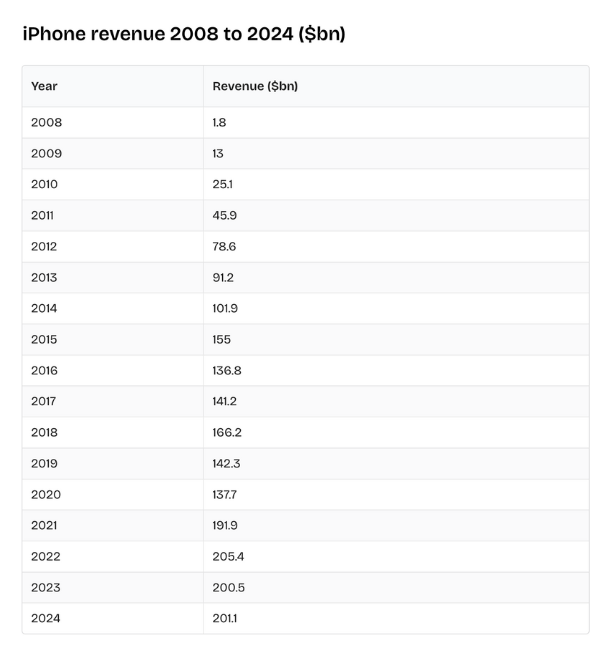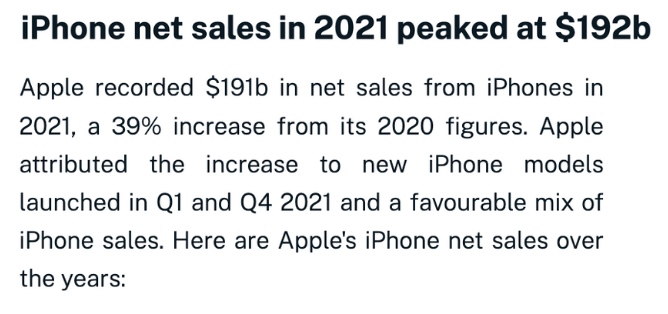Apple's IPhone Revenue
Welcome to my webpage exploring the data, information, and knowledge derived from Apple's iPhone revenue over the years. As one of the world's most influential tech companies, Apple has redefined innovation with its groundbreaking products, including the iPhone, which has revolutionized mobile technology and reshaped global markets since its launch in 2007.
Figure 1 illustrates the evolution of the iPhone, showcasing how Apple has consistently released a new model every year since the debut of the original iPhone in 2007. This annual cycle, typically timed for a September launch, highlights Apple’s commitment to innovation and its ability to keep pace with changing consumer demands and technological advancements; from the introduction of groundbreaking features like the App Store and Face ID to iterative improvements in performance and design.
Figure 2 presents iPhone revenue from 2008 to 2024, showing a clear increase over time. Starting at $1.8 billion in 2008, revenue steadily grew each year, reaching $155 billion in 2015. After a slight decline in 2016 to $136.8 billion, the revenue fluctuated, peaking at $205.4 billion in 2022. The values remain above $200 billion from 2021 onwards, with slight variations between 2022 ($205.4 billion), 2023 ($200.5 billion), and 2024 ($201.1 billion). This raw data reflects the annual revenue trends over a 17-year span but does not yet analyze or interpret the factors driving these changes.
Figure 3 illustrates a significant decline in iPhone sales for the first time since its launch in 2007. This drop, which amounted to a 16% decrease in sales during the first quarter of 2016 and a sharper 32% decline compared to the previous quarter, can be partly attributed to the challenging economic conditions of the time. In 2016, global economic growth was sluggish, marked by reduced investments, weak government spending, and a slowdown in international trade. These factors likely affected consumer purchasing power and willingness to invest in premium products like the iPhone, contributing to the decline in sales.
Figure 4 highlights the peak of iPhone net sales in 2021, which reached $191 billion - a 39% increase compared to 2020. This surge can be attributed to the release of highly anticipated models like the iPhone 13 series, which introduced major upgrades in camera quality, performance, and 5G connectivity. Additionally, the ongoing pandemic likely influenced consumer behavior, as more people invested in technology for remote work, entertainment, and connectivity, contributing to the sharp increase in smartphone sales during this period.
In conclusion, the iPhone has had a transformative impact on both the tech industry and global consumer behavior, with its revenue trends reflecting Apple’s ability to adapt to changing market conditions. To sustain its success, Apple could take several strategic actions. Introducing more affordable iPhone models or offering financing options, such as payment plans and trade-in deals, would make the iPhone more accessible during economic downturns.
Additionally, Apple can grow global sales by targeting regions where smartphone adoption is rising. To maintain market leadership, accelerating R&D investments in cutting-edge technologies like foldable screens, improved battery life, and AR innovations will position the iPhone for the future of mobile technology.



